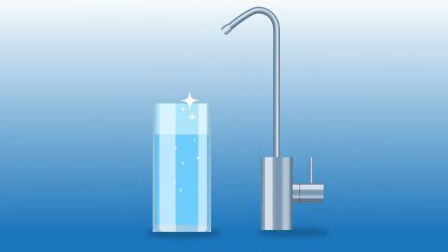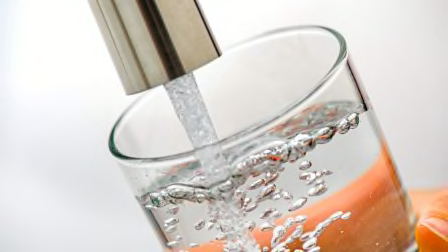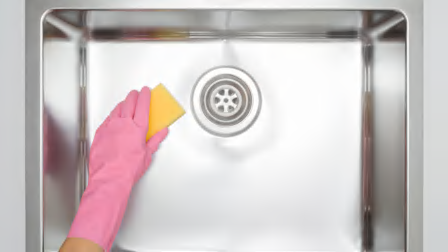Regulators Concerned Bottled Water, Not Just Tap, May Contain PFAS Contaminants
Michigan officials urged a bottled-water industry trade group to require tests for the chemicals to reassure consumers

Tap water contaminated with chemicals known as PFAS has become a major concern for some communities across the U.S. in recent years, with many turning to bottled water as an alternative source. But after tests last month showed that bottled spring water sold in several New England states had also been tainted by PFAS, questions are being raised about the safety of bottled water for those dealing with problems at their tap.
The lack of required testing for PFAS in bottled water has been a particular concern for at least one state, Michigan, grappling with tap water contaminated by PFAS, according to documents recently obtained by Consumer Reports through a Freedom of Information Act request.
Major bottlers say they now test for PFAS. But the documents reveal a problem that regulators face in dealing with tap water contaminated by the harmful chemicals: Without legally mandated testing for PFAS in bottled water, they can’t be entirely sure the alternative option is any safer.
Lawmaker Calls for FDA to Act Quickly
The Spring Hill contamination was only discovered as a result of spot testing conducted by the New Hampshire Department of Environmental Services in preparation for new proposed PFAS standards in the state.
During its investigation, New Hampshire regulators tested nearly two dozen brands of bottled water for PFAS and discovered that several brands sourced from Spring Hill had notable levels of the PFAS. The agency informed the Massachusetts DPH a week before the test results [PDF] were published in early July.
Following a CR report last month on New Hampshire’s tests, U.S. Sen. Richard Blumenthal, D-Conn., called on the FDA to set and enforce safety standards for PFAS in bottled water.
Citing CR’s earlier reporting, Blumenthal noted that the industry has taken steps to address the issue, including Spring Hill’s decision to install new filtration.
“However, had they not chosen to take this route, there would be no legal recourse to prevent the distribution of such water,” Blumenthal wrote in a letter to the FDA.
Blumenthal said the FDA should set and enforce a limit of 70 ppt for five combined PFAS chemicals in bottled water. For PFOA and PFOS, two of the chemicals known to be harmful, he said limits of 14 ppt and 13 ppt should be set, respectively.
“Given the widespread persistence of PFAS in our environment and drinking water, many people have turned to bottled water to avoid adding toxins to their bodies,” he said. “In light of this, it is especially concerning that bottled water may contain PFAS in unsafe concentrations.”
CR agrees that the FDA should quickly act to set and enforce a PFAS limit in bottled water and other beverages.
“The FDA must do its job and ensure that bottled beverages are safe,” says William Wallace, a safety policy advocate at CR. “The FDA should enforce a binding limit for PFAS in bottled water and other bottled beverages at no greater than 10 ppt—the current level used by the IBWA—and evaluate evidence showing it may need to be significantly lower.”
Consumers in the New England area can check to determine whether their bottled water comes from Spring Hill by looking on the product’s label, which lists the water source. The Spring Hill products affected by PFAS are those that list “spring” water on the label.
The advisory applies only to water produced before July 24, 2019, and in containers ranging in size from 1 to 2.5 gallons. The production date can be found on the shoulder of the bottle.




















